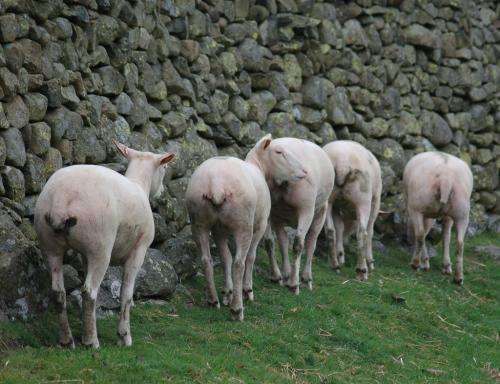Genetic link holds key for sheep affliction

New research shows WA farmers may soon be able to breed sheep with high natural resistance to breech strike, as part of a nationwide study to identify the traits of animals able to withstand the problem.
Breech strike costs the Australian sheep industry nearly $280 million per year and places huge demands on farmers' workload and total production.
The problem is caused by flies laying their eggs in the fleece around the sheep's breech (buttocks) area.
When the eggs hatch, the maggots feed on the sheep's skin causing severe pain and death if left untreated.
In a bid to curb the problem, Australian Wool Innovation began trials at two sites to identify potential heritable traits that can be correlated to breech strike.
WA Department of Agriculture and Food lead researcher Johan Greeff says his team collected data from 2833 unmulesed Merino lambs and 1535 dams to identify indicator traits for breech strike in a Mediterranean environment.
"This kind of study is difficult both practically and ethically, because when the animal is struck by flies, and if it is not identified within 5-6 days, it can die quickly," he says.
"So it is not an option for sheep breeders to expose animals to the flies directly to test for susceptibility and resistance."
"We managed to conduct trials in a normal production environment where no preventative treatments were applied to protect sheep from being struck by flies, but they were immediately treated when found to be fly struck."
In all, 31 per cent of ewes and 22 per cent of rams were fly struck in the breech area between birth and hogget shearing.
The scientists then estimated the heritability of and the phenotypic and genetic correlations between the potential indicator traits and breech strike.
In total, 77 skin, body conformation, wool, disease and production traits that may contribute to breech strike and that could qualify as potential indicator traits were recorded.
The results showed that breech strike is a heritable trait, with the most important indicator traits being dags (at any time, especially at hogget age, spring or at weaning), urine stain (at weaning and marking), neck wrinkle (at hogget age) and breech cover (at post-weaning shearing).
"In WA, the most important indicator trait is dags and then urine stain, then wrinkles, followed by breech cover," Dr Greeff says.
"In the summer rainfall regions in the eastern states, the situation is different because they don't have a lot of dags.
"They found that wrinkles, urine stain and breech cover are the most important traits."
More information: Greeff J. C., Karlsson L. J. E., Schlink A. C. (2014) "Identifying indicator traits for breech strike in Merino sheep in a Mediterranean environment." Animal Production Science 54, 125–140.
Provided by Science Network WA
















